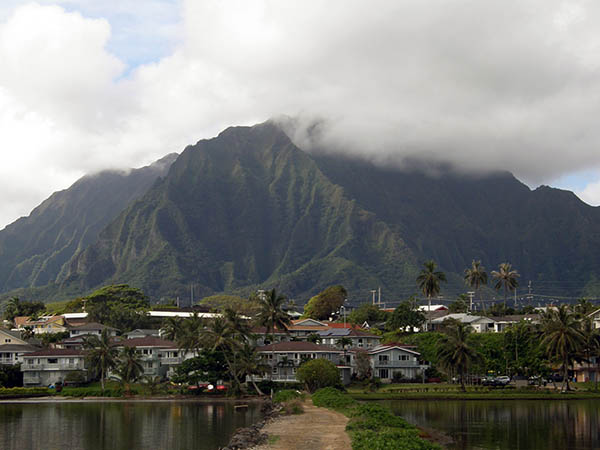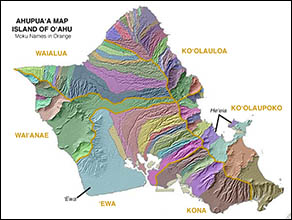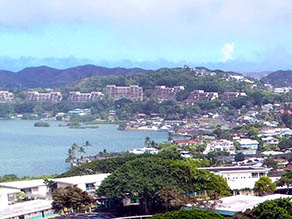 |
 |
 |
 |
||||||
|
|
|
|
|
|
|
|
|
|
 |
|
 |
 |
“When you get to the top of the mountain, that is Keahiakahoe” Mahealani relates. “There was a farmer that lived in Ha‘ikū Valley and his name was Kahoe. The legend about Keahiakahoe has to do with his imu pit where he cooked his sweet potatoes. Keahiakahoe means ‘the fire of Kahoe.’ And the fire could be seen from the ocean side. So the mountain top that is named for him, Ke Ahi a Kahoe, where the transmitter station was. The tallest part over He‘eia is that peak Keahiakahoe.” 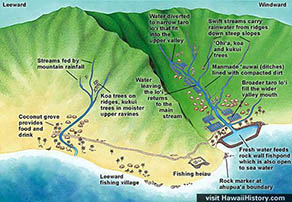
“This story is the classic story of the ahupua‘a as a socio-economic land division based on place,” Ian elaborates. “‘Socio’ in that within the ahupua‘a lives the family, and the distribution of the family, depending on the desires of the keiki and of course the lineage—which would carry the knowledge and expertise in one or another area. Hereditary knowledge. “But the child could choose, or most often would choose whether or not they would want to follow that. If you want to be a fisherman, you’re going to live down makai. If you want to be a farmer, you will live up mauka. You might end up learning from an uncle or auntie or something versus your own parents or grandparents or something like that. But the distribution of the family went mauka-makai depending on the skills and what they wanted to do. “It’s economic in that the family shared the resources within that land division. If you lived in an ahupua‘a , that which is in the ahupua‘a was always available to you. So the fishermen, Pahu, would catch fish and bring them up to Kahoe and Kahoe would get the kalo and share the kalo. And then together they’d have a well balanced meal. “This is the story of the brother named Pahu and his brother Kāhoe, who was a farmer who lived at the base of the mountains. Pahu and Kahoe had a sister too, named Loe, like Moku o Loe, Coconut island. Kahoe was a penitent man who worshipped Kāne, and Kāne rewarded him with excellent harvests. And he had a big pig pen up there, everything. “The mo‘olelo talks of the woman named Lo‘e,” Mahealani adds, “who was a young girl who traveled with her brothers from ‘Ewa to He‘eia. She went around the island looking for a new home because they had been kicked out of their family home in ‘Ewa because they were unruly teenagers. So the three travelled around until they got to He‘eia and when they saw this ahupua‘a, they fell in love with it. So Lo‘e settled on the island. The brother Pahu who was a fisherman, settled on a little hill across from the island, it’s called Pu‘u Pahu, now covered with townhouses. And the other brother, the fisherman was named Kahoe and he settled up in Ha‘ikū Valley where he raised sweet potatoes and other products. “ 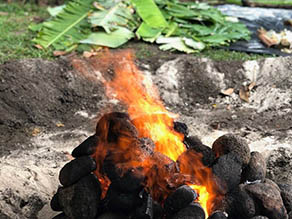
“In Hawaiian culture, if you make eye contact with people—if a visitor is coming by and they come see you—you invite them to come eat. ‘Mai e ‘ai! Come and eat!’ And that’s what’s proper. In times of famine, if you could find the smoke from a fire, you would go there so that you could eat. And then the obligation would be for the person to say, ‘Oh! Mai e ‘ai! Come and eat.’ Even if it’s hard times, you are supposed to share, that’s da kine. “Ke-ahi-a-Kahoe, ‘the fires of Kahoe,’ references that the smoke from his imu. You could not find the source of the smoke because it would swirl up with the clouds that run up the mountains, which is called orographic lifting, over there on the edge of the Ko‘olaus. “The different versions talk of Pahu’s wife, or Pahu himself, not delivering the fish that was caught, but rather only bringing up bait fish—but still taking plenty kalo from Kahoe. One day, Loe went up to the mountain to visit Kahoe and was like ‘Wow, how’s that big ulua fish that brother brought up for you? I saw him walking up with it.’ And he’s ‘Wait, what? He never brought no big fish. All they gave me was the little bait fish, the akule from inside the bay.’ And they both realize. 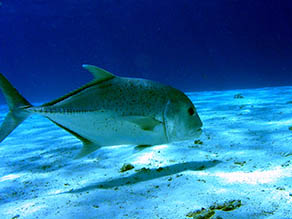
“Typically Hawaiians, if they were fishermen, would exchange fish with the upland farmers,” Kalani says, “who then supply them with upland produce. So there is this exchange between the two brothers. Except at one point, Kahoe says to his sister Lo‘e, ‘How is it that Brother is always giving me rubbish fish? Is the fishing that bad?’ and she said ‘Oh no he’s doing very well.’ So he’s wondering why his brother is holding out on him. “What happens next," Ian continues, "is that a great famine comes over the land, and it is said that even in the sea all of the fish disappeared. It actually happened in the movie Moana. All the fish left from inside of the reef, from inside the bay. No more!" “Interesting though that when in times of no rainfall, drought and famine, the fish disappear as well. Interesting, but that seems to happen, there is some kind of correlation,” Kalani adds.” “And so the story goes that Pahu could only stand here,” Ian says, “where he is still—turned to stone—standing there looking up mauka at his brother, knowing where the source of the smoke was, but being too ashamed to walk up and ask his brother for kalo, knowing he had shorted this brother in this system. “And it was said that Lo‘e was so all heartbroken by this that she began to weep, and she wept and wept until her tears burst forth as a spring that is right up there on the State Hospital property there, just next to Windward Community College campus. The name of the spring is Wai a Lo‘e, the waters of Lo‘e, the tears of Lo‘e. (As students in the 199os we found her and opened up the taro patches there with Winstong Kong, and farmed them until the State Hospital kicked us out. It is overgrown and fallow to this day.)" “The drought came and people down there at seaside have no food,” Kalani presents small variation on the tale, “and so they came up mauka [upland] and he—the farmer Kahoe—decided, well, he didn’t have the food to share with everybody, so he therefore lit his cooking fires at night so that the smoke wouldn’t be seen, and the smoke would therefore go up the foothills, up the ravines, and dissipate up there. So that’s why the place is called the Fires of Kahoe.” “One of the major cultural violations in Hawaiian culture is not to share. You have any food, you always share. It works two ways, of course. Once we were having a picnic lunch at Waimānalo beach. We had lots of food, friends of mine and myself, and we saw these two Mormon missionaries walking by. We call out to come and share and we shared and they were very grateful: ‘Well, when you come to Utah…’ 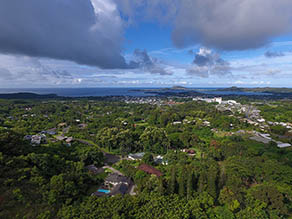
“Hawaiians were very emphatic and very acutely aware of sustainability. There were times when you didn’t go fishing, because you had to allow them to regenerate, to restore the stock. And of course they were very wise farmers and fishermen because after all, they had been doing it for generations. And now the modern world now is coming to realize just how innovative and how acutely wise they were in engineering and construction efforts. To enhance horticulture, building extensive terraces and waterways and all the rest.” “But again,” Ian concludes, “as part of this poetic vision of the landscape: what it really shows us is the lateral ridge that runs from the Ko‘olau mountains, from Kāhoe— the waters of Lo‘e. That water course itself comes all the way down through Pahu. Where that water course ends is out there at Moku o Lo‘e. So again, the mo‘olelo physically embodied on the landscape so that you can understand the connectivity of it all. Because when you show up with just those few canoes, what’s the most important thing? The fresh water—where is your fresh water?” Keoni talks about wahi pana (special places) of Waipao.
|
 |
 |
Our fifth storied place takes us out onto the reef, where a large formation is known as the Ahu a Laka.
|
 |
||
 |
|
 |
||

|
 |
||||
|
||||
Copyright 2019 Pacific Worlds & Associates • Usage Policy • Webmaster |
||||
